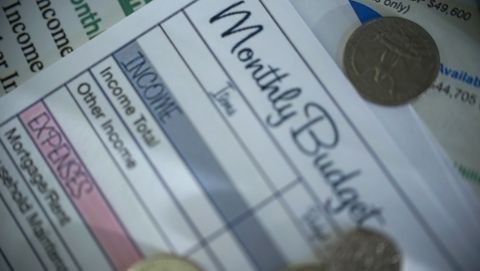Budgeting Tools and Techniques
By: Melanie Dabb, USU Extension Assistant Professor
April 20, 2021

There are a lot of budgeting tools, tricks and apps out there to choose from that will help you manage your finances. Unfortunately, there’s not a one-size-fits-all answer for which process is best for everyone. You will need to decide which system for managing your money works best for you. However, there are some key characteristics and steps to budgeting you do want include in your financial management system. It is also important to make sure you have a budgeting system that is flexible and will allow you to make adjustments as your goals and habits change.
The first step in creating a budget is to write down your goals. What is it you are trying to accomplish with your budget? Having a place to record your goals can help keep you on track with your spending and saving plan.
Next, you will want to account for all of your income. Start with paycheck income and then add in funds you receive from other sources such as SNAP-Benefits (otherwise known as food stamps), etc. After you have accounted for all your monthly income, then track your expenses. You want to be as accurate as possible when listing your expenses. Track how much you typically spend on fun things like going to the movies or purchasing a wanted item, as well as, other items like food, clothing, and transportation. Look at everything you spend in a typical month. It helps to go back and look at receipts, transactions, and your bank and credit card statements. This is one area where budgeting apps that connect directly to your bank and credit card accounts can be helpful as all of your transactions can be tracked automatically. Make sure you include the money you put into savings and set aside for goals as expenses! This is really important in helping you build up your savings.
Be sure to account for special expenses. These are things like gifts for birthdays, holidays, family vacations and school registration. In a basic budget, add up what you estimate spending on each of these expenses and divide that number by 12. Add that number to your monthly expenses to set aside each month. For more in depth planning for special expenses visit: https://extension.usu.edu/finance/faq/budget-for-non-monthly-expenses. Whichever method you use, make sure this amount is set aside for your special expenses.
After you have calculated all your monthly expenses, subtract this number from your total monthly income. Ideally this number will be zero which means that every dollar that comes in has a job. If you end up with money not accounted for, this article has tips on where to assign those dollars: https://extension.usu.edu/finance/faq/how-to-manage-your-cash-flow.
Remember, when shopping for a budgeting app or creating your financial management system use a system that keeps your goals visible to help you stay on track. Utilize a system that will allow you to track the money that comes in and the money that goes out in close to real time. Also choose a method that will let you make adjustments to your budget as your circumstances change.
References:
https://extension.usu.edu/finance/budgeting-and-saving
Jewkes, M. (2009, July). Balancing the Budget, Fitting It All In. DigitalCommons@USU. https://digitalcommons.usu.edu/extension_curall/170/

